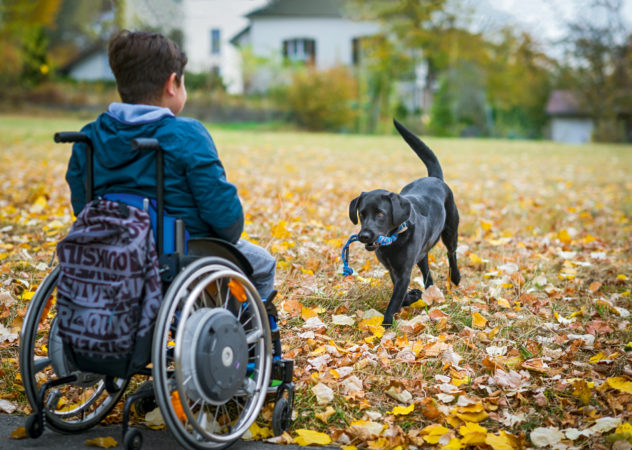
Introduction to the client
The assistance dog and its owner are settling in together over two weeks, with the help of an instructor, in the familiar surroundings of the owner's own home. At this stage, our approach depends on the individual requirements of our clients, integrating features such as treatments and rest periods.
Our aim for the team is to enjoy working together. Daily walks in the fresh air and playing with the dog are also vital. It’s important for clients to have the type of electrical equipment (such as an electrical wheelchair, Swisstrac, etc.) that will allow them to go on extended walks – along forest paths, for example.
Continuous support
The instructor will visit the team regularly for as long as they are together, and at least once a year. This keeps up the standard of the dog’s training and gives an opportunity to teach the dog new assistance behaviours, should there be any changes in the client’s health status.